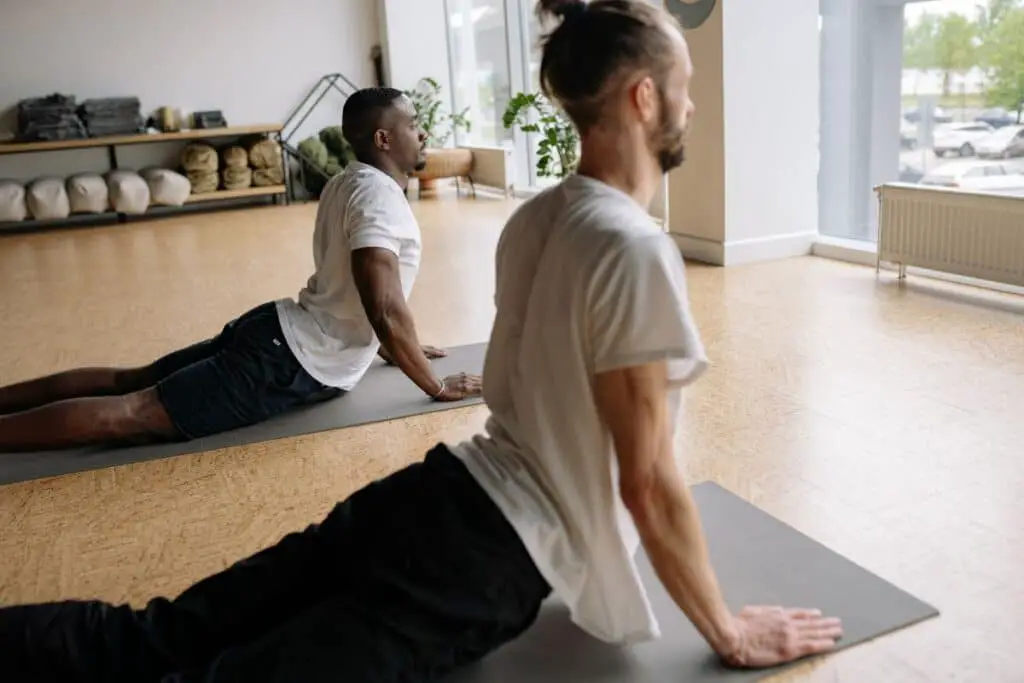Contrary to popular belief, Kegel exercises aren’t only for women.
Kegel exercises, also known as pelvic floor exercises,involve contracting and relaxing the muscles of the pelvic floor which support the bladder, rectum, and other pelvic organs.
These muscles can weaken due to various factors such as aging, obesity,and prostate surgery.
Although Kegel exercises were initially developed in the 1940s to help women with urinary incontinence, it has been proven that Kegel exercises are also beneficial for men, especially those who suffer from urinary incontinence, fecal incontinence or erectile dysfunction.
Now, even if you don’t currently suffer from erectile dysfunction, here’s why you need to keep watching this video.
Erectile dysfunction (ED), also referred to as impotence, is a condition where a man has consistent difficulty achieving or maintaining an erection sufficient for sexual intercourse.
According to the Massachusetts Male Aging Study, approximately 40% of men experience some degree of erectile dysfunction by the age of 40.
About 70% of men by the age of 70 will be affected by erectile dysfunction.
That’s a lot of men!
Especially since erectile dysfunction affects a man’s physical and mental wellbeing.
And I’m not saying that you should ignore other treatment strategies for erectile dysfunction; you definitely shouldn’t.
But consider Kegels to be a valuable addition to your arsenal of approaches. An addition that’s both
In my next video I’ll be giving a more thorough review of erectile dysfunction so you’d definitely want to subscribe so you don’t miss that video.
So we’ve established that Kegels can help with erectile dysfunction, but what about the other benefits of Kegel exercises?
“First up, let’s talk about how Kegel exercises can improve bladder control in men.
Whether you’ve experienced urinary incontinence or post-micturation dribble which is the involuntary leakage of urine immediately after urination or you just want better control over your bladder, these exercises can make a significant difference.
“Now, let’s talk about something that might interest many of you – enhanced sexual pleasure.
Strengthening the pelvic floor muscles through Kegel exercises can lead to better control over ejaculation and increased sexual stamina. Some men even report more intense orgasms as a result.”
“For those dealing with premature ejaculation, Kegel exercises could be a game-changer. These exercises improve muscle control, potentially helping delay ejaculation.
Some studies suggest a positive relationship between pelvic floor muscle strength and overall prostate health. If you’ve already undergone prostate surgery, Kegel exercises can be a targeted and effective way to support the healing journey.”
“Last but not least, engaging in Kegel exercises can enhance circulation to the pelvic region. Improved blood flow contributes to the overall well-being of the genital organs.”
If you’re interested in the benefits of Kegel exercises for women, you’d want to check out this video.
Luckily, Kegel exercises can be done anywhere, anytime, and without anyone noticing. They can be done while sitting, standing, or even lying down.
But, while Kegel exercises may seem simple, it’s imperative that you perform them correctly in order to reap the benefits.

So how exactly do men perform kegel exercises?
Well, the first step is to While urinating, try to stop the flow of urine midstream by contracting your pelvic floor muscles or imagine that you’re urinating and someone suddenly opens the door.
Your natural instinct is to stop urinating.
This action helps you identify the muscles you’ll be working during Kegel exercises.
Once you’ve identified the pelvic floor muscles by stopping the flow of urine, practice contracting and relaxing them without actually urinating.
It’s essential not to make a habit of stopping urine midstream, as this can lead to other issues. So, it’s best to empty your bladder before doing kegels.
If you’re lying down, keep your knees comfortably bent and apart.
To start you should aim to…
- Contract the pelvic floor muscles for 5 seconds. To help you count the seconds without a watch just mentally count “One-potato, two-potato, three-potato, four-potato, five-potato.
- Then relax the muscles for 5 seconds.
Even if you can only contract for 2 seconds when you first start kegels, that’s fine. Just contract for 2 seconds and then relax for 2 seconds. Doing this will build your endurance.
- Repeat the exercise 10 times in a row.
- Do these repetitions three times a day.
- Gradually increase the hold time to 10 seconds and the number of repetitions to 20.
Another way to identify the pelvic floor muscles is by imagining that you’re trying to stop the passing of gas. The muscles you contract to achieve this are part of the pelvic floor.
If you’re having difficulty feeling the contraction, you can use a mirror to observe the movement of your pelvic floor muscles. The base of the penis will move closer towards the abdomen and the testicles will rise.
You should work on isolating the pelvic floor muscles without contracting the muscles in the abdomen, buttocks, or thighs.
It might take some practice to control these muscles independently.
Remember to breathe normally while doing Kegel exercises. Avoid holding your breath, as this can create tension in other muscles.
Start with a few contractions and gradually increase the duration and intensity of the contractions as your muscles become stronger.
Doing too many exercises too soon can lead to muscle fatigue and discomfort.
But remember, consistency is key.
It’s important to note that if you’re uncertain about identifying the right muscles or have any concerns, consulting a healthcare professional, such as a physical therapist or urologist, can provide personalized guidance.

When should you expect results after starting kegel exercises?
If Kegel exercises are done correctly and regularly, it may take several weeks or months of consistent practice to notice an improvement in bladder control or sexual function.
Results may vary depending on your age, overall health, severity of symptoms and frequency and duration of the exercise.
But before you go, tracking progress is an essential part of any exercise program, including Kegel exercises for men.
It helps to monitor improvements, identify weaknesses, and adjust the routine accordingly.
Self-Assessment
Self-assessment is a simple way to track progress. You can keep a record of the number of Kegel exercises you do each day and the duration of each exercise.
Kegel Exercise Apps
There are also several smartphone apps available that can send reminders and help you track your progress.
Pelvic Floor Muscle Strength Assessment
Pelvic floor muscle strength assessment is another way to track your progress with Kegels. This involves using ultrasonography to assess the strength of the pelvic floor muscles.
However, Kegel exercises may not be appropriate for all men, particularly those with certain medical conditions such as urinary tract infections.
Consulting with your healthcare professional can help ensure that Kegel exercises are safe and effective for you.
Related Posts:








